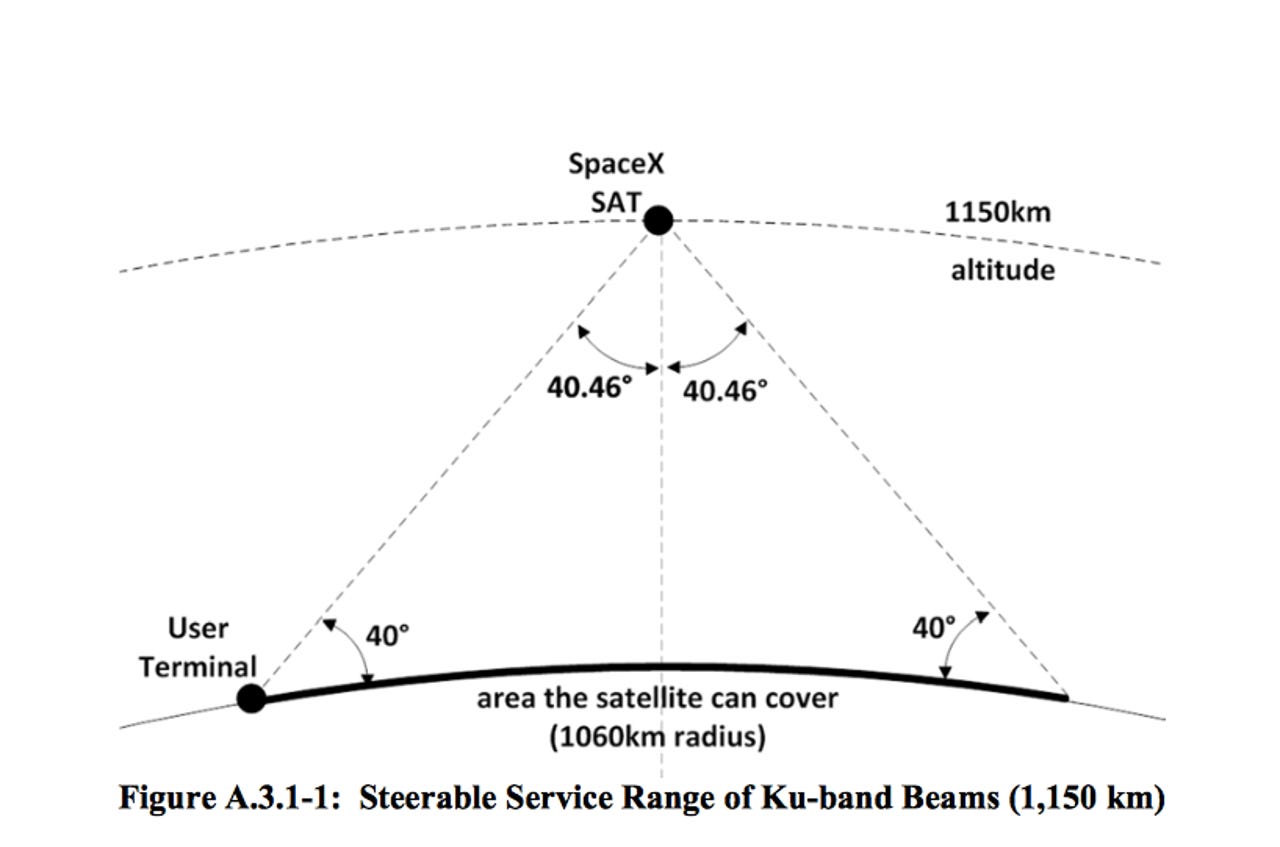SpaceX plots 4,000 satellite constellation for home broadband


SpaceX's plans for delivering satellite broadband.
Elon Musk's rocket-launching service SpaceX has detailed plans to launch hundreds of satellites as a backbone for a global broadband service.
Musk first discussed the idea of creating a global ISP with around 4,000 satellites in 2015, as part of his plan to fund a city on Mars. SpaceX has now offered more details of the plan in documents filed with the Federal Communications Commission (FCC), which were first reported on by Geekwire.
SpaceX, which Google has backed to the tune of $1bn, hopes to kick off the ISP with 800 satellites operating in the Ka and Ku bands, according to a technical document.
Future additions would expand the network to 4,425 satellites, each weighing 386kg or about 850 pounds, and measuring 4m by 1.8m by 1.2m, with additional solar arrays.
The satellites would orbit at an altitude of 1,150km, allowing it to cover a 1,060km radius on earth.
"The system is designed to provide a wide range of broadband and communications services for residential, commercial, institutional, governmental, and professional users worldwide," SpaceX said.
Space X's application doesn't offer cost estimates or a specific launch date. When Musk revealed his satellite broadband ambitions in early 2015, he said it would cost $10bn and that the ISP would be a long-term revenue source to fund a city on Mars.
Boeing and separately OneWeb, which is backed by Airbus, Virgin, Bharti, and Qualcomm, have also filed applications for spectrum to support satellite-based internet services.
SpaceX's application details how it would avoid interfering with other satellite and terrestrial networks already in use, such as the Radio Astronomy Service. The US and Norwegian governments have also filed applications on behalf of SpaceX with the International Telecommunication Union for access to spectrum.
Given the scale of the proposed network, SpaceX also details how it will safely launch, manage, and decommission satellites, including measures to prevent them becoming harmful space debris.
"Significant coordination must be performed with other satellite operators in nearby orbits to safely ascend and descend through constellations and to ensure any altitude perturbations do not result in unnecessarily close approaches," it notes.
SpaceX estimates each satellite will have a lifespan of about five to seven years, after which they will brought down to earth's atmosphere for an "eventual atmospheric demise". Using NASA software, it's estimated the chances of causing a human casualty are at worse case one in 18,200, far less than required one in 10,000 margin set by NASA.
"SpaceX anticipates that its satellites will reenter the Earth's atmosphere within approximately one year after completion of their mission -- much sooner than the international standard of 25 years. After the mission is complete, the spacecraft (regardless of operational altitude) will be moved to a 1,075 km circular orbit in its operational inclination, then gradually lower perigee until the propellant is exhausted, achieving a perigee of at most 300 km."
"After all propellant is consumed, the spacecraft will be reoriented to maximize the vehicle's total cross-sectional area, a configuration also stable in the direction of aerodynamic drag. Finally, the spacecraft will begin to passivate itself by de-spinning reaction wheels and drawing batteries down to a safe level and powering down. Over the following months, the denser atmosphere will gradually lower the satellite's perigee until its eventual atmospheric demise."